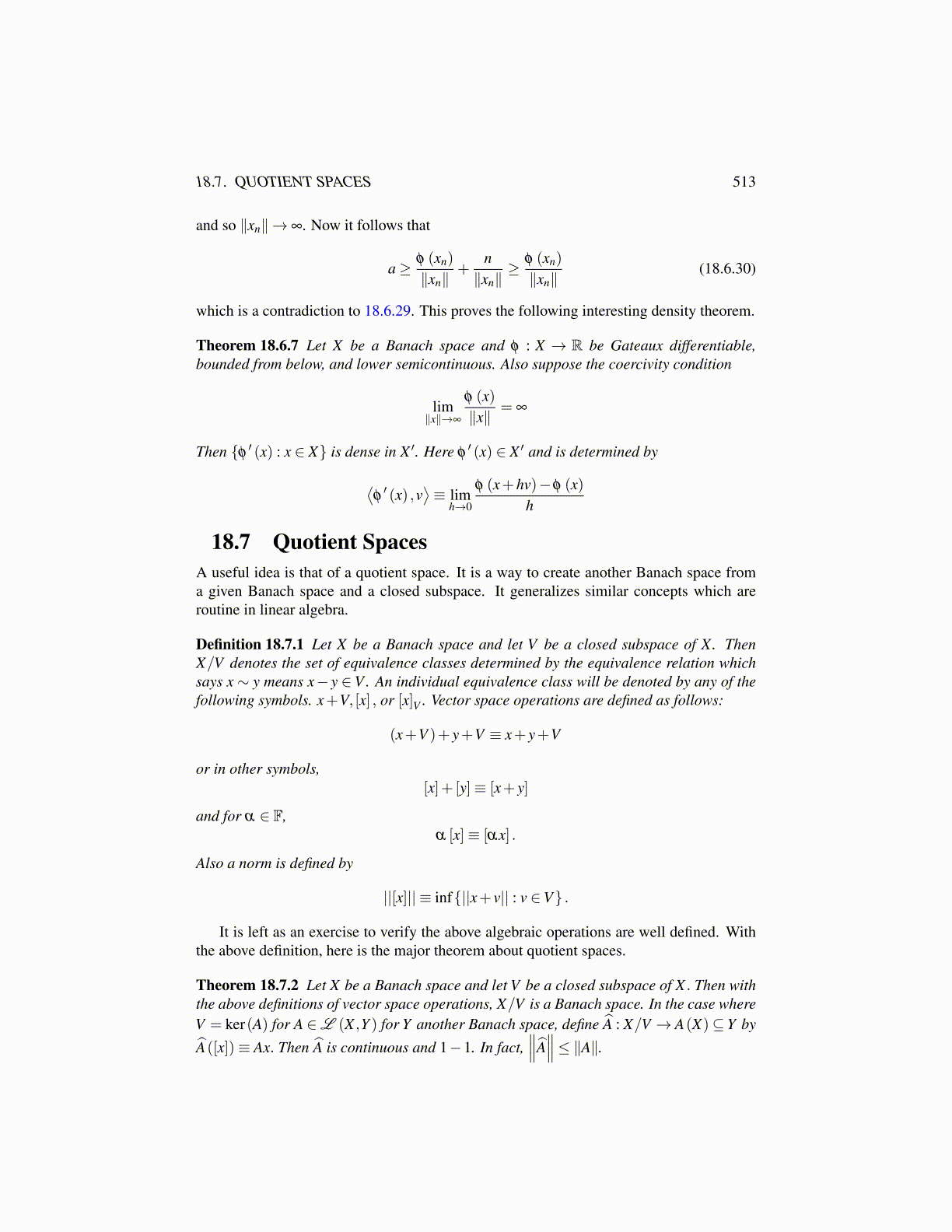
18.7. QUOTIENT SPACES 513
and so ∥xn∥→ ∞. Now it follows that
a≥ φ (xn)
∥xn∥+
n∥xn∥
≥ φ (xn)
∥xn∥(18.6.30)
which is a contradiction to 18.6.29. This proves the following interesting density theorem.
Theorem 18.6.7 Let X be a Banach space and φ : X → R be Gateaux differentiable,bounded from below, and lower semicontinuous. Also suppose the coercivity condition
lim∥x∥→∞
φ (x)∥x∥
= ∞
Then {φ ′ (x) : x ∈ X} is dense in X ′. Here φ′ (x) ∈ X ′ and is determined by
⟨φ′ (x) ,v
⟩≡ lim
h→0
φ (x+hv)−φ (x)h
18.7 Quotient SpacesA useful idea is that of a quotient space. It is a way to create another Banach space froma given Banach space and a closed subspace. It generalizes similar concepts which areroutine in linear algebra.
Definition 18.7.1 Let X be a Banach space and let V be a closed subspace of X. ThenX/V denotes the set of equivalence classes determined by the equivalence relation whichsays x∼ y means x− y ∈V . An individual equivalence class will be denoted by any of thefollowing symbols. x+V, [x] , or [x]V . Vector space operations are defined as follows:
(x+V )+ y+V ≡ x+ y+V
or in other symbols,[x]+ [y]≡ [x+ y]
and for α ∈ F,α [x]≡ [αx] .
Also a norm is defined by
||[x]|| ≡ inf{||x+ v|| : v ∈V} .
It is left as an exercise to verify the above algebraic operations are well defined. Withthe above definition, here is the major theorem about quotient spaces.
Theorem 18.7.2 Let X be a Banach space and let V be a closed subspace of X . Then withthe above definitions of vector space operations, X/V is a Banach space. In the case whereV = ker(A) for A ∈L (X ,Y ) for Y another Banach space, define  : X/V → A(X)⊆Y by
Â([x])≡ Ax. Then  is continuous and 1−1. In fact,∥∥∥Â∥∥∥≤ ∥A∥.